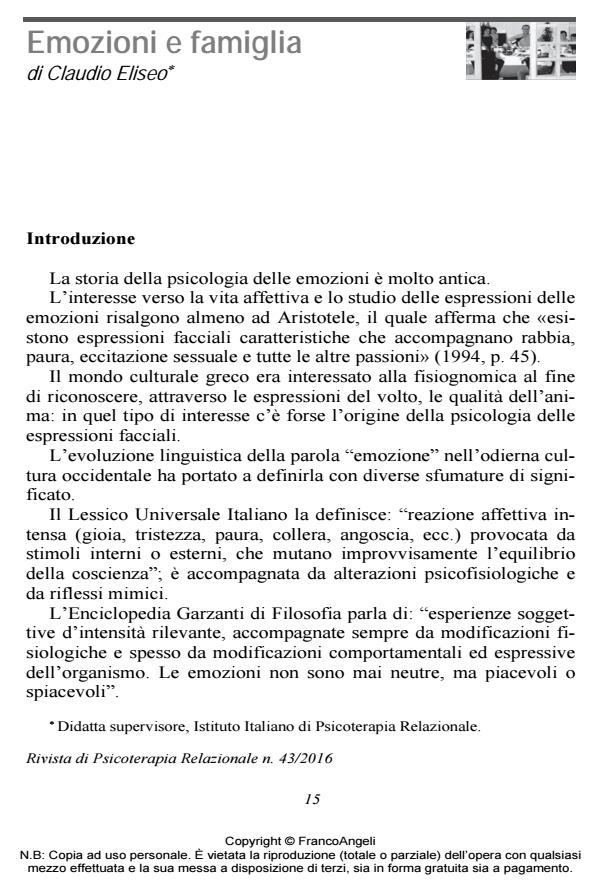Emotions and the family
Journal title RIVISTA DI PSICOTERAPIA RELAZIONALE
Author/s Claudio Eliseo
Publishing Year 2016 Issue 2016/43
Language Italian Pages 14 P. 15-28 File size 171 KB
DOI 10.3280/PR2016-043002
DOI is like a bar code for intellectual property: to have more infomation
click here
Below, you can see the article first page
If you want to buy this article in PDF format, you can do it, following the instructions to buy download credits

FrancoAngeli is member of Publishers International Linking Association, Inc (PILA), a not-for-profit association which run the CrossRef service enabling links to and from online scholarly content.
The author deals with the expression of the emotions in the course of family life, with particular reference to the evolution of feelings in the life cycle of the family. The article is devoted to the analogy between emotional competence development and language development in an intersubjective perspective. Finally it gave space to the topic of emotions in the therapeutic relationship.
Keywords: Emotions, feelings, family, relationship
Claudio Eliseo, Emozioni e famiglia in "RIVISTA DI PSICOTERAPIA RELAZIONALE " 43/2016, pp 15-28, DOI: 10.3280/PR2016-043002